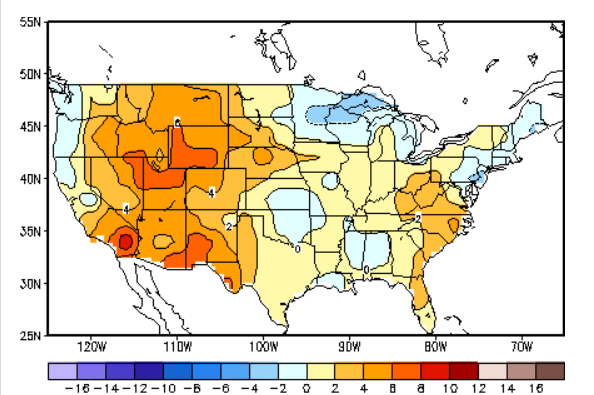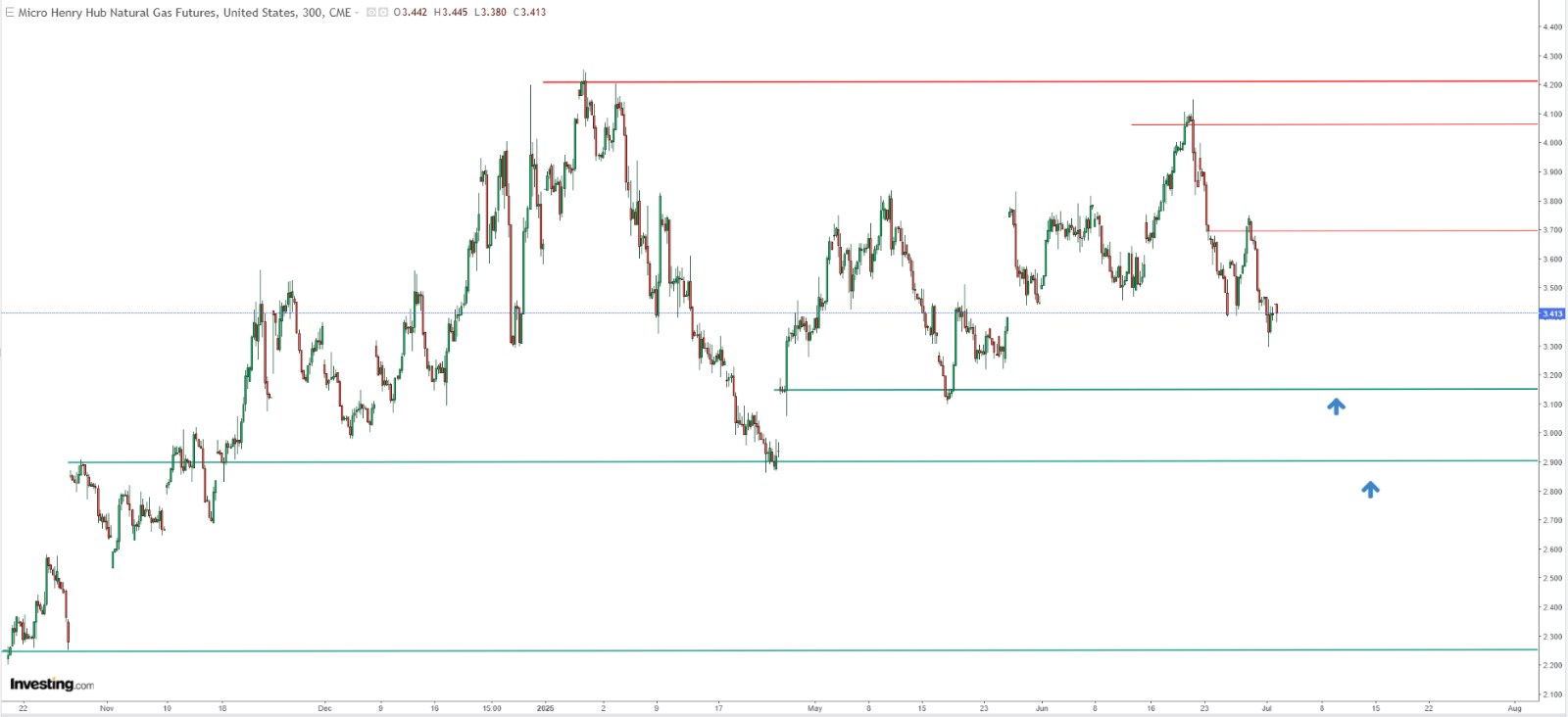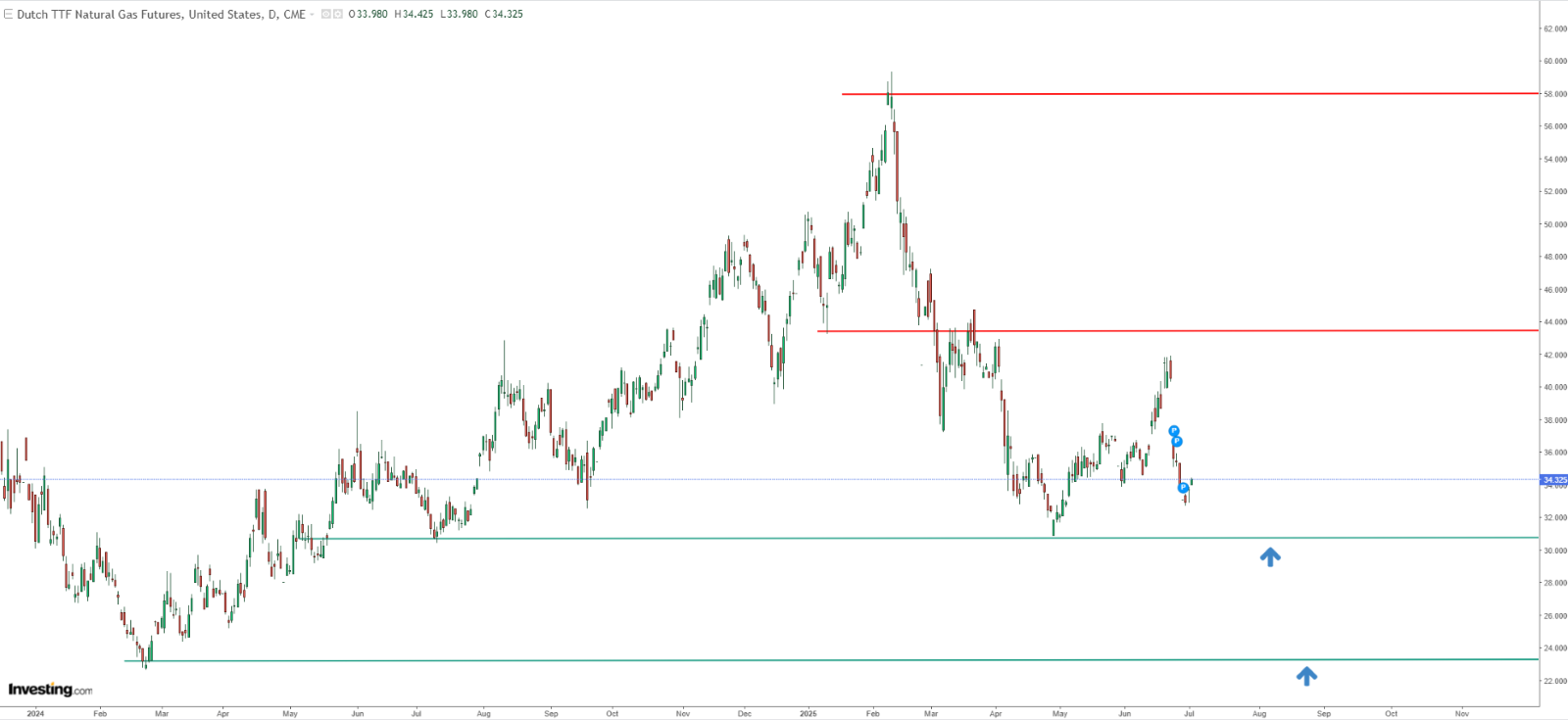The truce in the Middle East is a welcome development for buyers. Around 20% of the world’s passes through the Strait of Hormuz, so the reduced risk of disruption there has eased market tensions and lowered price pressure.
On top of that, gas supplies in the US are higher than usual for this time of year, and warmer weather has kept demand low. Because of this, US natural gas prices have dropped below $4 per unit. Prices may fall further, and could even return to the lows seen in April.
Bearish Drivers Line Up for Henry Hub Contracts
The latest report from the Energy Information Administration (EIA) provides fresh data on the natural gas market. One key highlight is that gas inventories rose in the week ending June 20 and are now 7% above the five-year average. In addition, weather conditions are playing an important role—temperatures across most US states, except the central region, are running higher than usual. This mix of strong supply and warmer weather is shaping current market dynamics.

Warmer weather means people are using less natural gas, which lowers demand. When that is combined with stable or rising storage levels, there is little reason for prices to stay above $4 per MMBtu. Looking ahead, the market will likely focus on inventory levels, especially as companies begin stockpiling for the winter—particularly in northern regions where demand tends to rise.
Henry Hub Vulnerable With Little Support in Sight
Henry Hub natural gas prices have fallen below the $4 per MMBtu mark and continue to decline. The next level sellers are watching is around $3.15 per MMBtu, where the market may see at least a short-term bounce.

The key level to watch is still this year’s low near $2.90 per MMBtu, where a strong rebound earlier confirmed solid support. If prices break below that, it could open up attractive buying opportunities, especially since it would push prices well below this year’s average as estimated by the EIA.
Dutch TTF Downward Trend Continues
European Dutch TTF gas prices have also been falling. However, in this case, the recent drop is part of a longer supply-driven trend that started back in February.

The €31 level held firm in April, confirming it as a key support zone. This level is now acting as a crucial barrier against further price drops. If it breaks, prices could head toward the long-term low near €23. On the upside, the next resistance is in the €41–42 range.
****
Be sure to check out InvestingPro to stay in sync with the market trend and what it means for your trading. Whether you’re a novice investor or a seasoned trader, leveraging InvestingPro can unlock a world of investment opportunities while minimizing risks amid the challenging market backdrop.
- ProPicks AI: AI-selected stock winners with proven track record.
- InvestingPro Fair Value: Instantly find out if a stock is underpriced or overvalued.
- Advanced Stock Screener: Search for the best stocks based on hundreds of selected filters, and criteria.
- Top Ideas: See what stocks billionaire investors such as Warren Buffett, Michael Burry, and George Soros are buying.
Disclaimer: This article is written for informational purposes only. It is not intended to encourage the purchase of assets in any way, nor does it constitute a solicitation, offer, recommendation or suggestion to invest. I would like to remind you that all assets are evaluated from multiple perspectives and are highly risky, so any investment decision and the associated risk belongs to the investor. We also do not provide any investment advisory services.

